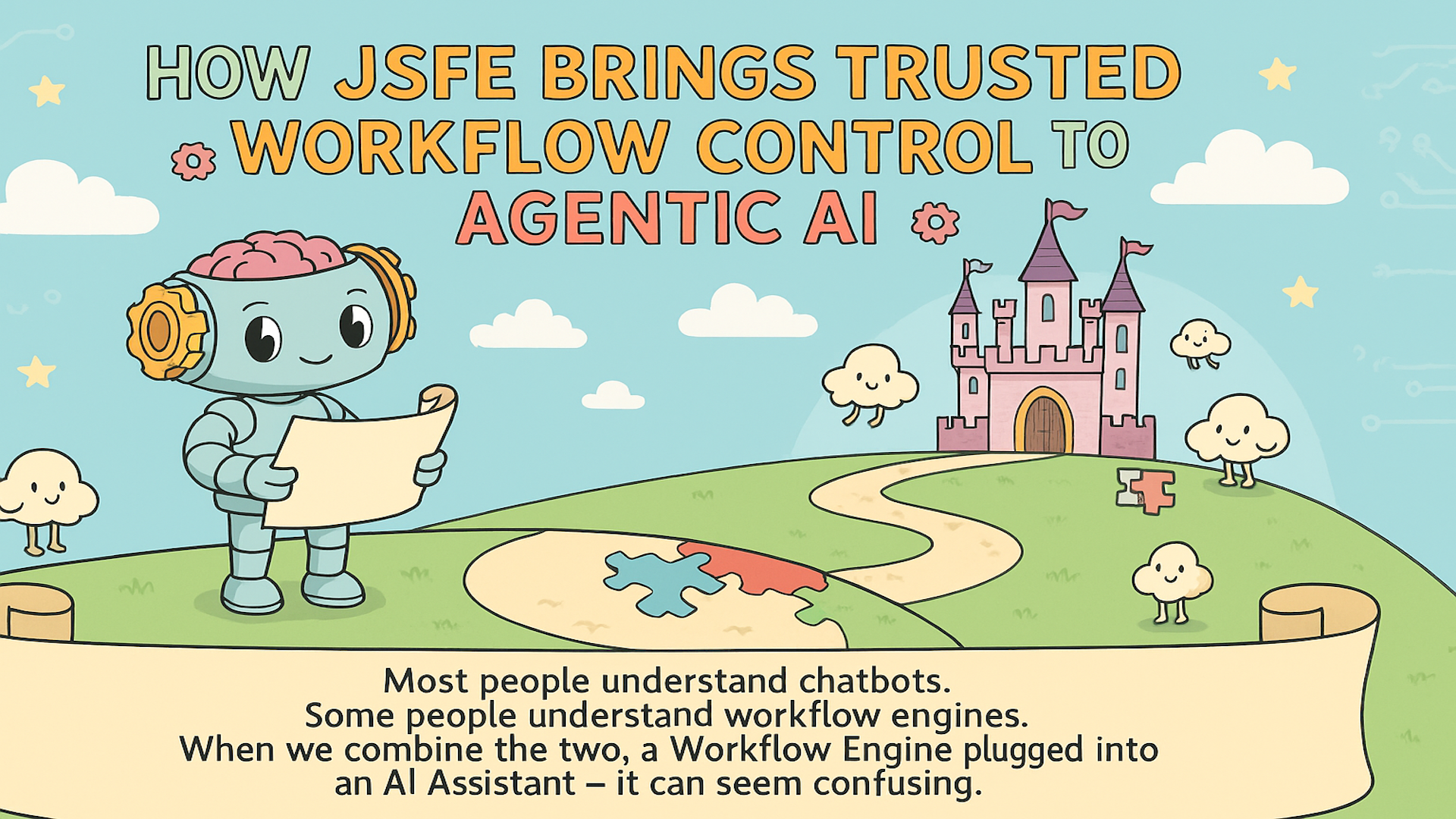
How JSFE Brings Trusted Workflow Control to Agentic AI
Over the last few weeks, we've received many inquiries about our earlier articles on JSFE that we realized something important: even though the idea is simple, many people still find it puzzling.
Most people understand chatbots. Some people understand workflow engines. When we combine the two, a Workflow Engine plugged into an AI Assistant — it can seem confusing. Let's break it down step by step, using a sequence of diagrams.
1. The Engine as a Plug-in
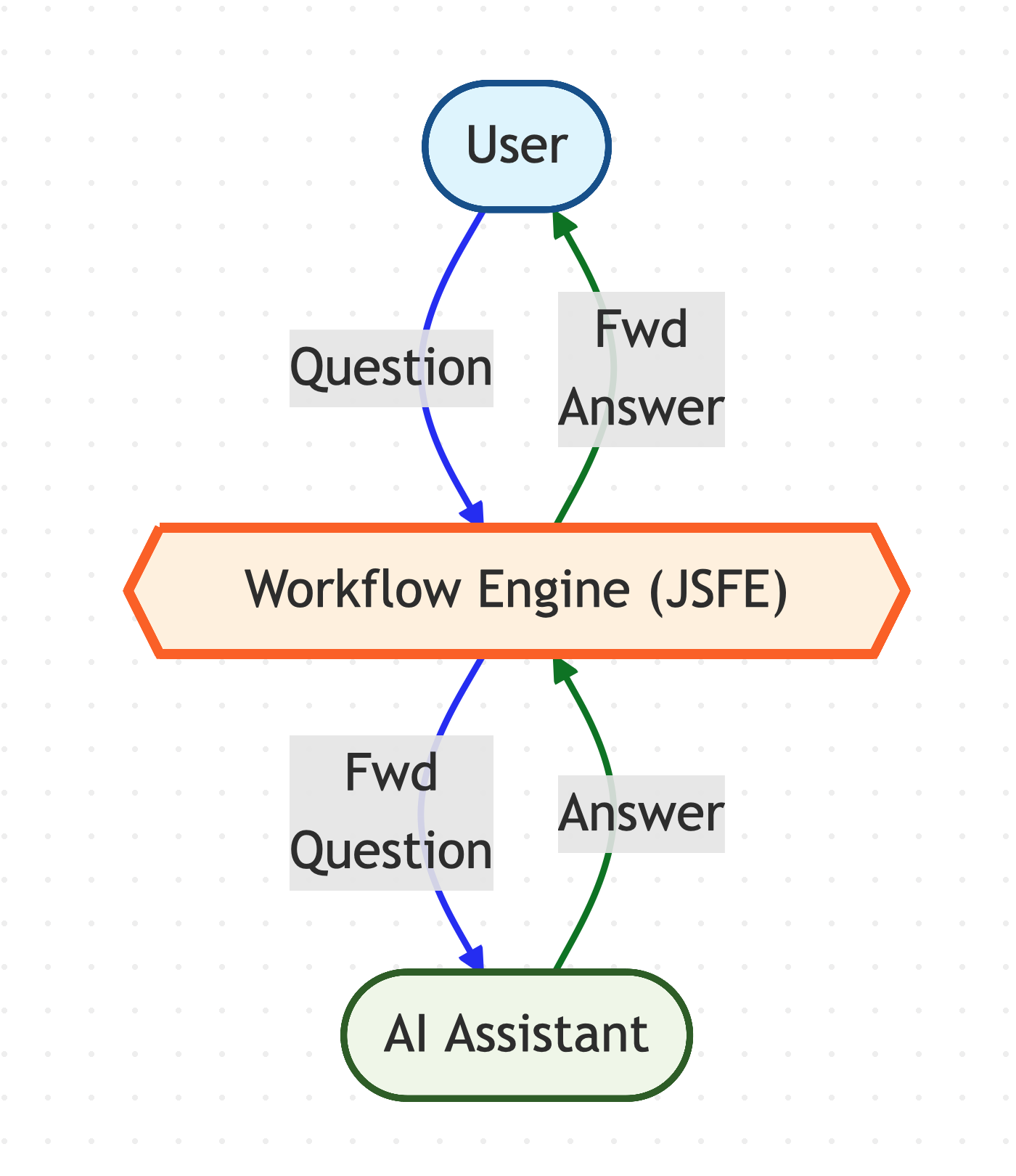
The Engine watches every chat turn.
Every question from the user flows through the engine to the AI, and every answer from the AI flows back through the engine. Nothing changes for the user - but the engine now has full visibility of the dialogue.
2. Silent Intent Detection
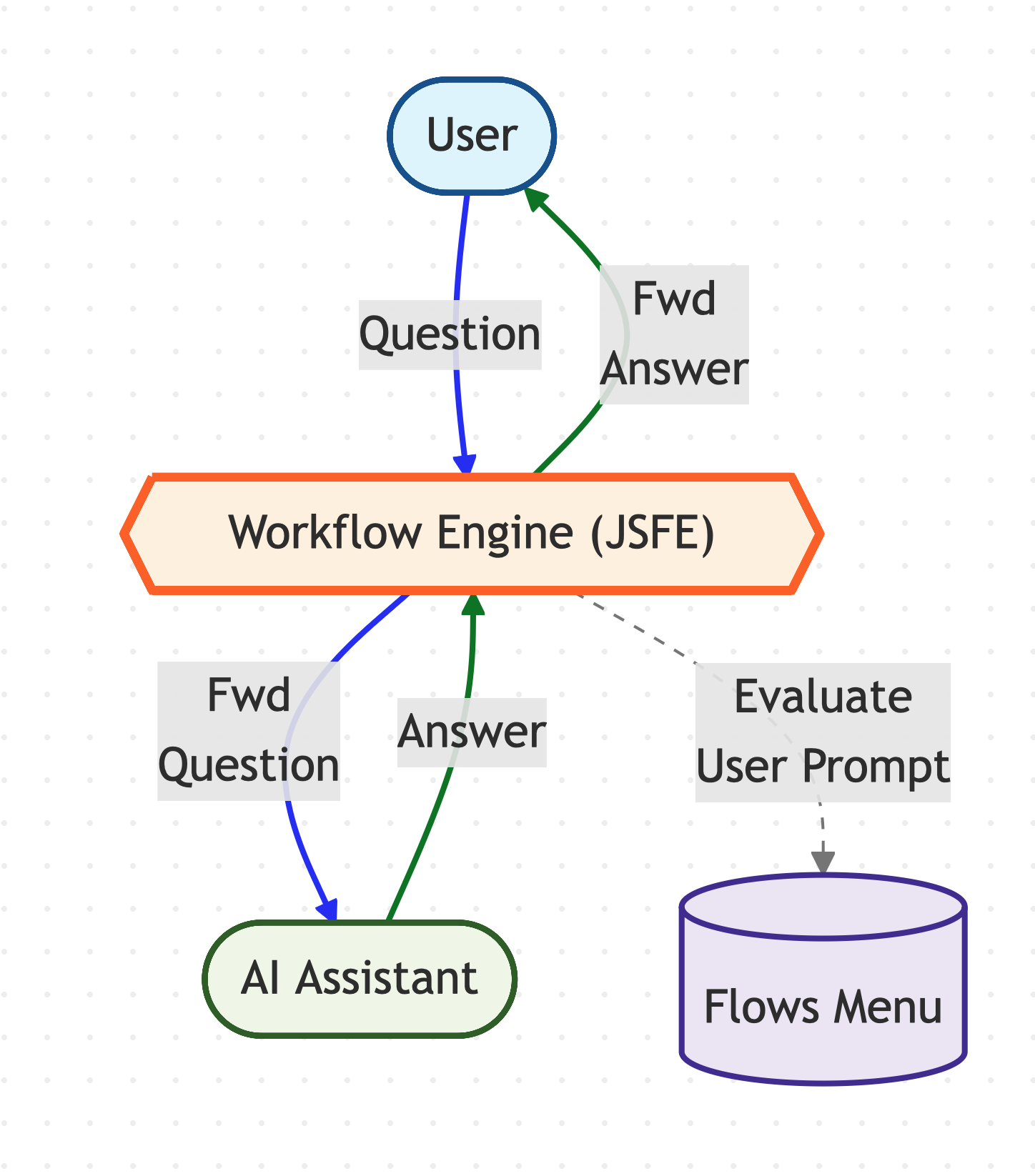
It silently checks if a workflow should start.
This visibility allows JSFE to evaluate every user prompt against a predefined Flows Menu (like make payment, check balance, reset password).
Side note: while the core idea of JSFE is to sidestep AI for the Agentic Integrations allowing 100% hallucination free actions - for intent detection JSFE does use AI semantic matching, not just old-fashioned lexical search. That means it will recognize “I’d like to settle my bill” as the same intent as “make a payment.”, and other variations.
3. Detecting an Intent
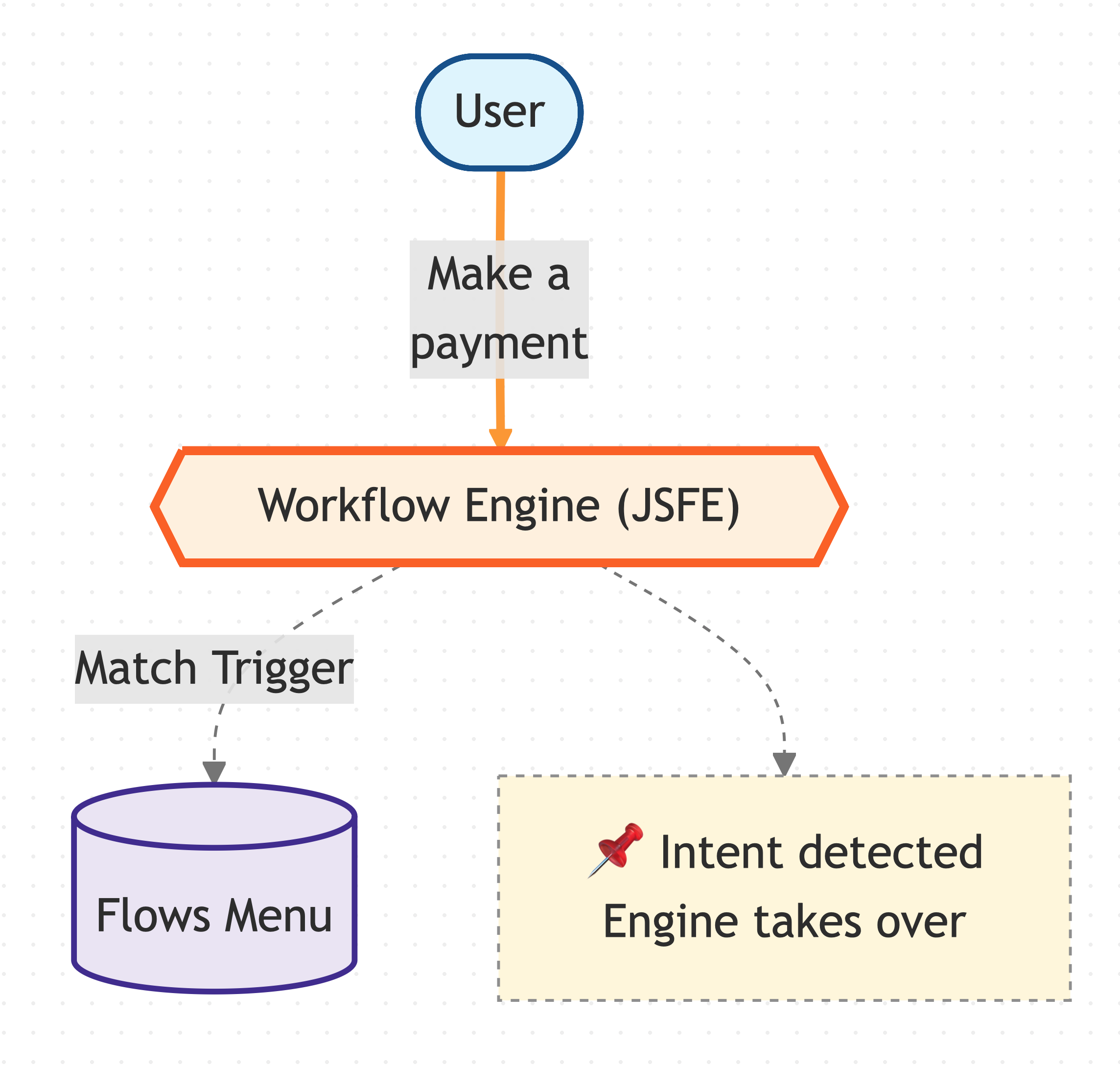 When intent is matched a Workflow, the Engine takes over.
When intent is matched a Workflow, the Engine takes over.
When the user says “Make a payment”, the intent matches the payment flow in the menu. At this moment, the engine takes control.
The AI Assistant is still there, but “ghosted” — waiting until the scripted flow completes.
4. Executing the Flow
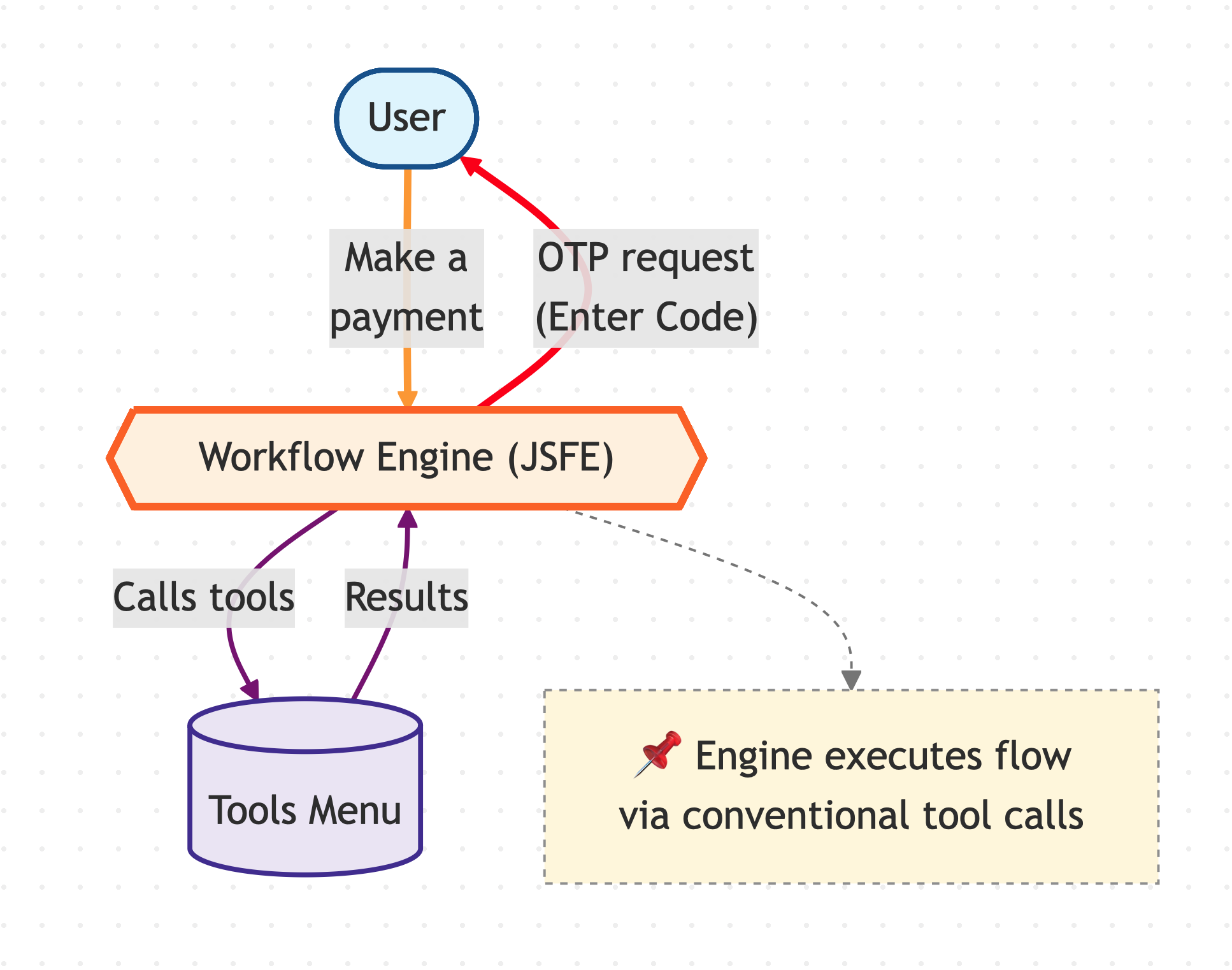
JSFE executes the scripted workflow deterministically.
The engine now drives the conversation directly:
- Requests secure input (“Please enter the OTP we sent”).
- Calls the necessary backend tools (authentication, payment API, validation).
- Manages all branching logic through its trusted, conventional scripting model.
At this stage, AI utilization is limited to input sanitization: On voice channels, if the user says “Umm, ok” to a yes/no prompt, AI cleans this into a normalized “yes.” This ensures the flow runs smoothly without tripping on noisy human input.
5. Returning Control to AI
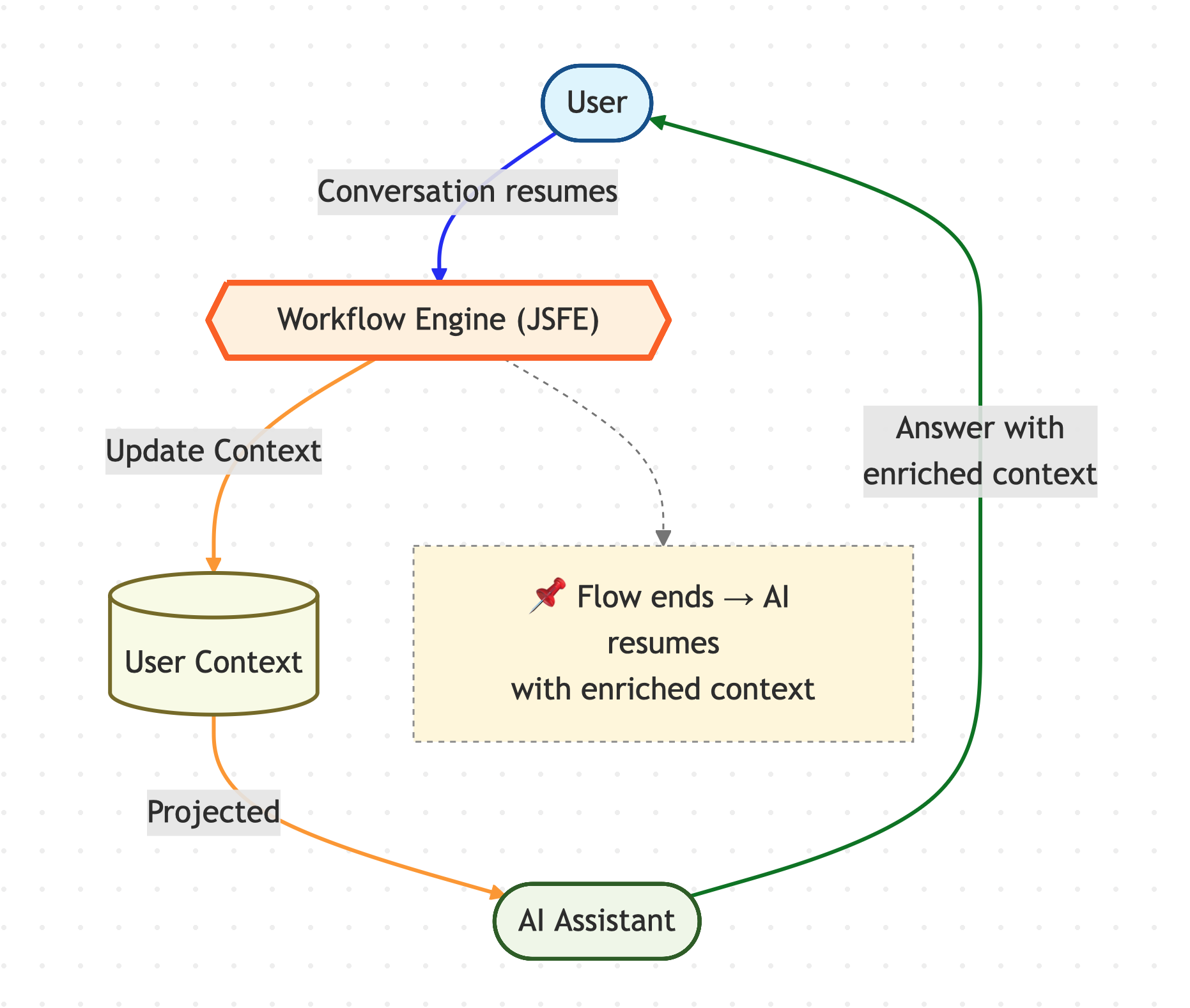
When the workflow ends, JSFE updates the User Context and hands control back to the AI Assistant.
Once the scripted flow is complete, JSFE updates the User Context (for example, user is $800, last payment: $200, ...). That enriched context is then projected back to the AI Assistant.
The conversation resumes, but now the AI has safe, verified data to answer user questions. (“Yes, your payment was processed. Your current balance is $800.”)
Why this fits into our 'It Just Works' design philosophy
This hybrid approach solves the core challenge of “agentic AI”:
- AI for recognition → detect natural intents in user prompts.
- AI for sanitization → clean noisy human input into structured responses.
- JSFE for execution → run mission-critical steps deterministically, with guaranteed outcomes.
- Seamless integration → the user never sees the handoff; they just experience a smooth conversation.
It's the best of both worlds: the reliability of conventional software with the flexibility of AI.
As always, your feedback is highly appreciated.
Want to learn more? Read more blogs - Or visit our main page Back to Home